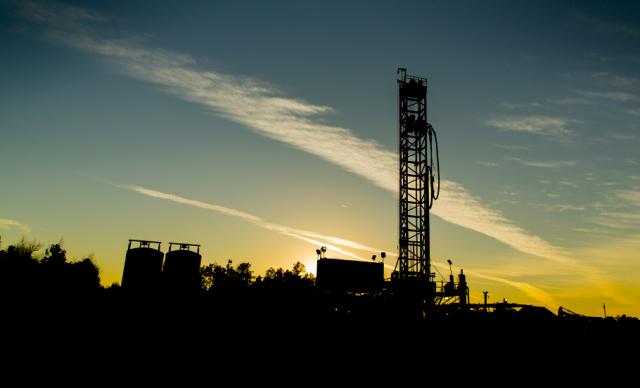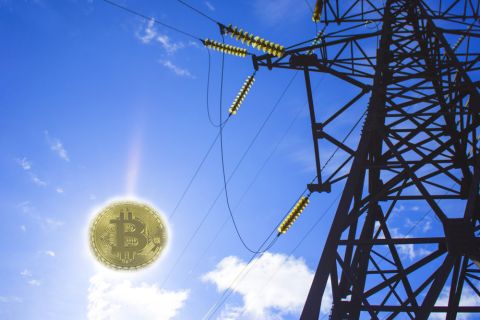
Southwestern Energy uses a number of different technologies and techniques to reduce methane and fugitive emissions at drilling sites. (Source: Southwestern Energy)
When it comes to fighting methane emissions, name a technique or process and chances are likely that Southwestern Energy Co. (NYSE: SWN) has probably tried it, tweaked it, put it to use or is working on something better.
Teaming up with other oil and gas powerhouses, small service companies or flying solo, the Houston-based E&P was among those singled out as being among the leaders in monitoring emissions.
“Ultimately, our company’s goal is to get to a stage of predictive analytics—where we are not just reacting to leaks; we are tracking, trending, finding and predicting where the leaks will be so we can be proactive instead of reactive,” Mark Boling, president of V+ development solutions for Southwestern Energy, told Hart Energy.
The name of the game, as Boling puts it, in leak detection and repair (LDAR) is lowering costs while enhancing reliability. Methane emissions is an issue that can be resolved cost effectively, he said, although he admits what’s cost effective for one company may not be for another.
As oil and gas companies, like Southwestern Energy, work to lower emissions, methane emissions associated with the national gas industry continue to drop—down by about 15% from 1990 to 2014 as gas production increased. However, a push is underway to undo some of the environmental regulations born during the Obama administration, which put combating change high on the agenda.
This comes as U.S. energy-related CO₂ emissions also fell in first-half 2016 to 2,530 million metric tons, their lowest levels for the same time period since 1991, according to the U.S. Energy Information Administration.
RELATED LINK: Industry Awaits Legislators’ Next Move Regarding Emissions
Some fear the methane emissions-fighting momentum that strengthened in recent years, with programs like the Methane Detectors Challenge and the Our Nation’s Energy (ONE) Future Coalition, will slow as some legislators work to undo some air quality-related regulations with a new administration.
“Methane rules spur methane innovation and methane rules create methane-cutting jobs,” Ben Ratner, a director with the Environmental Defense Fund (EDF) told Hart Energy. “Regulatory rollbacks, I would expect, could well stunt the growth of America’s emerging methane mitigation industry. … But it’s important to keep in mind there’s a global market here for advancements in automated continuous methane detection.”
The EDF has teamed up with some oil and gas companies, including Southwestern Energy, as part of the Methane Detectors Challenge program aimed at finding ways to reduce emissions with technology.
Regardless of what’s happening in Washington, D.C., some companies are moving forward, having set their own agendas toward responsibly developing the nation’s abundant natural gas resources.
If done right, Boling said, natural gas will be part of the solution to many energy and environmental issues with “climate change being at the top of the list.”
“We have to be willing to do whatever we can to make sure that when somebody makes a decision to use natural gas to generate electricity, as opposed to some other source, that they are going to get the climate benefit they anticipate,” Boling said. “It’s up to us to do that because it would be a tremendous shame if our country didn’t take advantage of its tremendous natural gas resources and the reason why it didn’t is because we could not prove that we were willing to step up and deal with the methane emission issue the way it can be dealt with.”
The Southwestern Way
At Southwestern, a number of different technologies and techniques are being used to reduce methane and fugitive emissions at drilling sites, the majority of which are on private and state land. A few include:
- Green completions—a process that separates gas and liquids from the flowback, enabling the gas to be treated and used or sold—are used on all wells to minimize venting of volatile organic compounds and methane;
- High-bleed and low-bleed pneumatic controllers, which use gas pressure to control the operation of mechanical devices, have been replaced with intermittent-bleed or no-bleed controllers. But the company is working to replace these gas-driven pneumatic controllers with fuel cells and air pneumatics. Boling noted Southwestern is currently testing thermoelectric devices;
- Smart lift automated gas systems and artificial plunger lift systems have been installed on wells to lower emissions associated with liquids unloading; and
- Many of Southwestern’s pneumatic pumps have been replaced with solar pumps.
“We’ve been doing a lot of these for quite some time,” Boling said, after pointing out some of the changes were implemented after the company joined in 2006 the Environmental Protection Agency’s Natural Gas Star program, a voluntary program that urges companies to use “cost-effective technologies and practices that improve operational efficiency and reduce methane emissions.”
Reaching New Heights
Hand-held optical imaging, forward-looking infrared cameras are also used to survey facilities, take measurements and locate emissions in hopes of quickly finding and repairing leaks. The cameras are also used along with high-flow meters to assist in not only locating leaks, but quantifying them, Boling explained.
But the big target is finding issues before they become problems.
“Our ultimate goal is to get to the stage of predictive analytics,” he said.
In recent years, Southwestern has taken flight, testing drones for leak detection as part of the Raven project with GE Oil and Gas in the Fayetteville Shale. The company has also worked with Kairos Aerospace to find big leaks during airplane flyovers. These so-called “super emitters” are few in numbers but can be responsible for the lion’s share of emissions.
Experience has already taught those in the field that the handheld devices and drones are beneficial for detecting smaller leaks in places, while both drones and airplanes are useful for covering more territory.
Now, Southwestern—working with partners—is gearing up to test the effectiveness, advantages and disadvantages of all of its techniques combined. It is also working to develop a cost-effective real-time monitoring device with IBM and a separate monitoring project California-based Accu-Tech.
Worth The Effort
Are the efforts working?
“They are paying off quite well for a couple of different reasons,” Boling said.
The work led to more than 1.77 billion cubic feet (Bcf) of methane emission reductions, the company reported in 2013. Since 2006, Southwestern has reported total methane emission reductions of more than 38.8 Bcf. Green completions—which started voluntarily on the company’s Fayetteville Shale acreage in Arkansas—were credited to playing the biggest role in the drop.
Southwestern’s reputation for applying science and technology oftentimes leads firms with the latest innovations to their doorstep. “So we see a lot,” Boling said. He added that the company, as well as its colleagues in the One Future Coalition—Apache Corp. (NYSE: APA), BHP Billion Ltd. (NYSE: BHP), Hess Corp. (NYSE: HES) and others—apply science and technology when finding solutions to emissions. That’s something that should also be done from a policy perspective, he added.
“What we hear from many in the industry, not all, is that they understand that in our digital world we’re moving to a future of automated and continuous digital detection,” Ratner said. “These companies know it’s about more than just climate change. It’s about keeping products in the pipe and out of the atmosphere.”
More products in the pipe mean more money-making potential.
But the challenge is driving down costs to put such solutions within reach for all companies.
One optical gas imaging camera can cost between $14,000 and $25,000. Plus, expanding gas-capture infrastructure such as compressors to increase pipeline capacity can be expensive.
Boling pointed out that what’s considered cost-effective for Southwestern may not be for another operator.
The company bought its own equipment, but has lots of wells to help amortize costs—something smaller operators may not have. Southwestern made money from recouped natural gas during the first year of LDAR, but broke even the second year and didn’t make money the third year as gas prices fell and success at fixing leaks meant there weren’t as many.
However, Boling believes that as technology advances and budding service companies focused on air quality become more engaged, costs will fall.
“But right now I think people need to be sensitive to the fact that not everybody can do the same thing that Southwestern can do,” Boling said.
“What I’m very optimistic about is that if you let American people innovate, they will find the answers. That’s where we’re at now—letting people work the problem and come up with innovations to solve it,” he said.
RELATED LINK: PODCAST: Methane and Messaging
Velda Addison can be reached at vaddison@hartenergy.com or via Twitter @VeldaAddison.
Recommended Reading
Report: Freeport LNG Hits Sixth Day of Dwindling Gas Consumption
2024-04-17 - With Freeport LNG operating at a fraction of its full capacity, natural gas futures have fallen following a short rally the week before.
Permian NatGas Hits 15-month Low as Negative Prices Linger
2024-04-16 - Prices at the Waha Hub in West Texas closed at negative $2.99/MMBtu on April 15, its lowest since December 2022.
BP Starts Oil Production at New Offshore Platform in Azerbaijan
2024-04-16 - Azeri Central East offshore platform is the seventh oil platform installed in the Azeri-Chirag-Gunashli field in the Caspian Sea.
US Could Release More SPR Oil to Keep Gas Prices Low, Senior White House Adviser Says
2024-04-16 - White House senior adviser John Podesta stopped short of saying there would be a release from the Strategic Petroleum Reserve any time soon at an industry conference on April 16.
Core Scientific to Expand its Texas Bitcoin Mining Center
2024-04-16 - Core Scientific said its Denton, Texas, data center currently operates 125 megawatts of bitcoin mining with total contracted power of approximately 300 MW.



